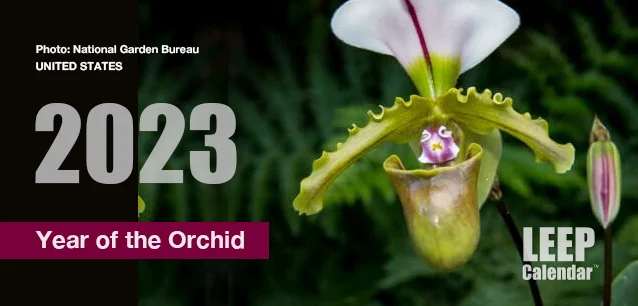 AD
AD
Today is: December 04
Scroll to explore events active on this date.
LEEP INK FEATURES

August? Absolutely!
In August, we live through the Dog Days of Summer. It's hot and often humid, and those who can leave for better climates do. Down south, winter is in full force. August is also known as "the ...

In The Heat of July: July 2025 Events
Is it hot enough (or cold enough if you're below the equator) for you yet? There is actually a day for that! Like every month, I pick a diverse collection of events you may or may not know about. This ...

May Blooms: Events in May 2025
Along with October, May is one of the most densely packed months of the year. It's before the summer humidity and the last whole month of the school year. The weather is warming in t...
About 2023, Year of the Orchid
Retail , Health
United States
Ends: Dec 31, 2023
DESCRIPTION:
2023 is the Year of Orchids.
Orchids, belonging to one of the largest and most diverse plant families, Orchidaceae, have a history as rich and fascinating as their exotic appearance. With over 25,000 species, orchids can be found on every continent except Antarctica, thriving in various ecological conditions, from tropical rainforests to arid deserts.
The allure of orchids dates back to ancient times. Traditional Chinese medicine used orchids for their healing properties as early as 1,500 BCE. The Greeks, too, were entranced by these flowers, associating them with fertility and virility. They derived the name "Orchis," signifying a testicle, referring to the shape of the plant's tuber.
During the Roman era, orchids were considered symbols of luxury and elegance. Their demand grew with the expansion of trade routes, and orchids were sought for their unique appearance and fragrance.
The popularity of orchids reached new heights during the Victorian era in Britain, known as "Orchidelirium." Wealthy collectors and enthusiasts sent explorers to remote parts of the world to find new and rare species. Orchids became a status symbol, and possessing rare varieties was a mark of prestige.
Cultivating orchids during that time was an intricate and challenging task, mainly due to a need for more understanding of their needs.
It was in the 19th century that crucial breakthroughs occurred: the discovery of the symbiotic relationship between orchids and certain fungi and the development of nutrient-rich soils allowed for more successful cultivation.
The propagation of orchids took a significant step forward with developing seedling germination techniques in the laboratory, making it possible to mass-produce orchids as affordable plants.
In various cultures, orchids hold symbolic meanings. They symbolize love, beauty, and strength and are often associated with specific celebrations and ceremonies. In modern times, the orchid's status as an object of beauty and refinement continues to endure, with the flower being a popular choice in floral arrangements and home gardens.
Contemporary horticulturists continue exploring, breeding, and hybridizing orchids, contributing to diverse species and hybrids. The legacy of orchids as a symbol of elegance, coupled with their captivating biology, ensures their prominence as one of the most cherished flowers in the world.
VIDEOS
Currently, this event does not have supporting videos.
SUPPORTING DOCUMENTS
Currently, this event does not have supporting documents.
ADDITIONAL IMAGES
Currently, this event does not have supporting images.
Where would you like to go now?
 AD
AD


/footer-logo.svg)
